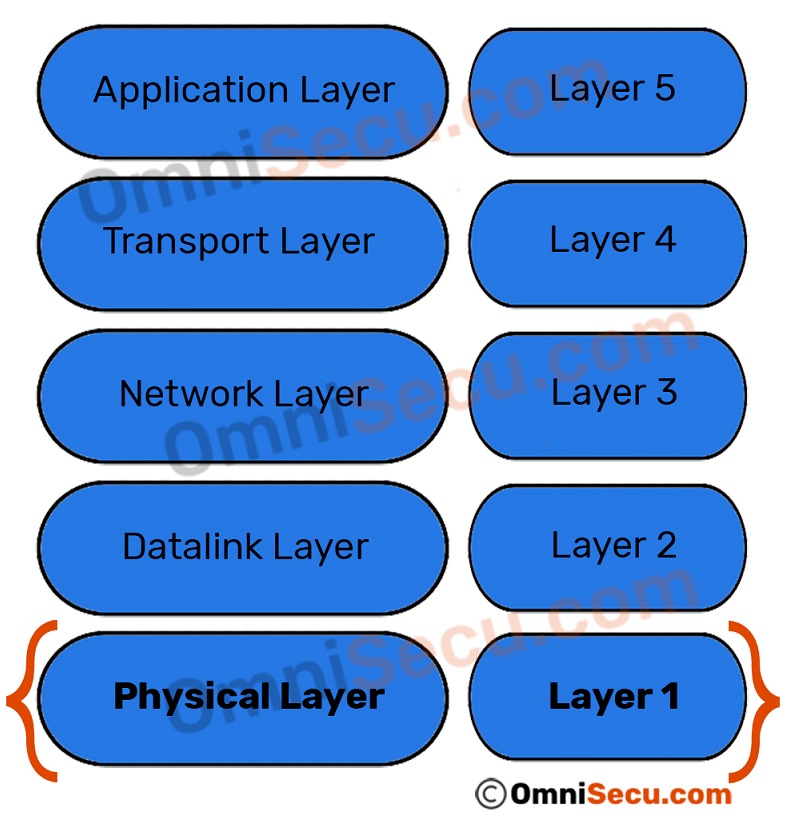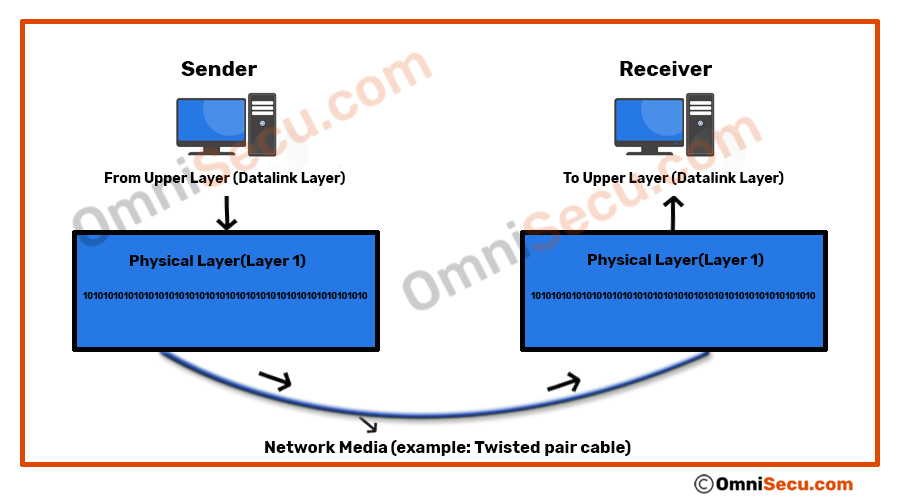Physical Layer (Layer 1)
In this tutorial lesson, you will learn about the Physical layer (Layer 1) of TCP/IP network model.
Layer 1 of TCP/IP model is the Physical layer. The Physical layer is the lowest layer of the TCP/IP model. The Physical layer (Layer 1) is responsible for the transfer of bits from one computer to another computer.

Actual binary data in digital form (0’s and 1’s) from the source computer is transmitted to destination computer in the form of electric signals (twisted pair cables) or light signals (fiber optic cables) or radio waves (wireless networks). Physical layer (Layer 1) concerned with the transmission and reception of the data stream from upper layers of TCP/IP model over any type of physical medium (electrical or optical or radio waves).
Following image represents the data flow from upper layers to physical layer and to twisted pair cable and finally to the physical layer of destination computer.

The Physical layer of TCP/IP model is responsible for converting the ethernet frame from upper layer (Datalink Layer) into a stream of bits suitable for the transmission medium (electrical signals, light signals or radio waves). The Physical layer manages and synchronizes signals for the actual transmission. The Physical layer places the bit stream on network media. On the destination device, the Physical layer reassembles these signals into frame and transfers to its upper layer (Datalink layer, Layer 2) of TCP/IP model for further processing.
Physical layer specifies the physical characteristics of network medium. Physical layer is responsible for encoding of data for transmission to the destination computer and the transmission rate. Physical layer decides whether the transmission is full duplex or half duplex.
Following table shows some important Physical layer (Layer 1) standards.
| Type of media | Type of signal | Standard |
|---|---|---|
| Twisted Pair Cable | Electrical signals | 100Base-TX, 100Base-FX, 100Base-T, 1000Base-T, 10GBase-T |
| Fiber Optic Cable | Light signals | 100Base-FX, 1000Base-SX, 1000Base-LX, 1000Base-CX, 10GBase-SR, 10GBase-LR |
| Wireless | Radio wave signals | IEEE 802.11, IEEE 802.11a, IEEE 802.11b, IEEE 802.11g, IEEE 802.11n, IEEE 802.11ac |
To get more wider view about different layers of TCP/IP protocol stack and how they operate together, please visit and learn below lessons in order.
- Five layered TCP/IP model
- How data is moved through different layers of TCP/IP model at sending and receiving computers
- Name of data packets at different layers of TCP/IP model
- TCP/IP Encapsulation and Decapsulation
- Application Layer (Layer 5)
- Transport Layer (Layer 4)
- Network Layer (Layer 3)
- Datalink Layer (Layer 2)
- Physical Layer (Layer 1)
In this lesson, you have learned about the Physical Layer (Layer 1) of TCP/IP model. Click next link below to continue learning.